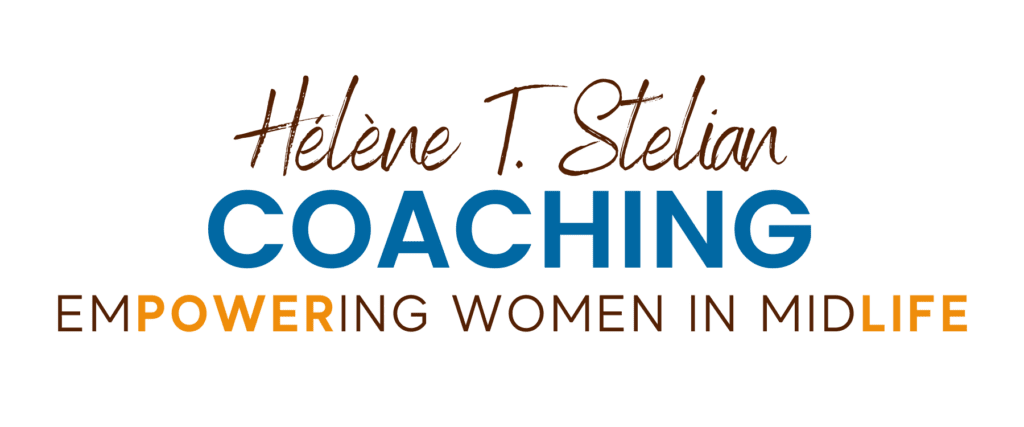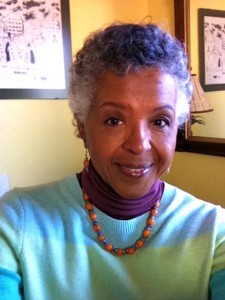 Adopted by a white family as a black child, Catana struggled with issues of racial identity. With her late husband actor Fred Tully’s encouragement, she wrote a memoir about her experience, in the hopes it will help other multi-racial adoptive families.
Adopted by a white family as a black child, Catana struggled with issues of racial identity. With her late husband actor Fred Tully’s encouragement, she wrote a memoir about her experience, in the hopes it will help other multi-racial adoptive families.
Tell us about your background…
I was born in a humble remote village in Guatemala and was told that shortly after my birth I was adopted by a family of White German settlers who lived there.
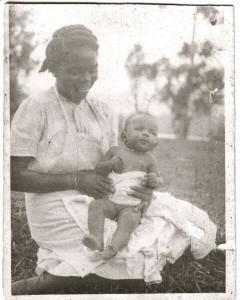
With my birth mother, Rosa
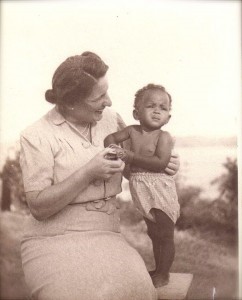
With my German adoptive mother, Mutti
I grew up as a German child in Guatemala City. German and Spanish were my first languages, soon followed by English, so that by age eight, I spoke and read three languages fluently. I attended the best schools in Guatemala then was sent to an international British boarding school in Jamaica, West Indies. My High School diploma came courtesy of the University of Cambridge, England, because at the time, in 1959, Jamaica was still a British colony.
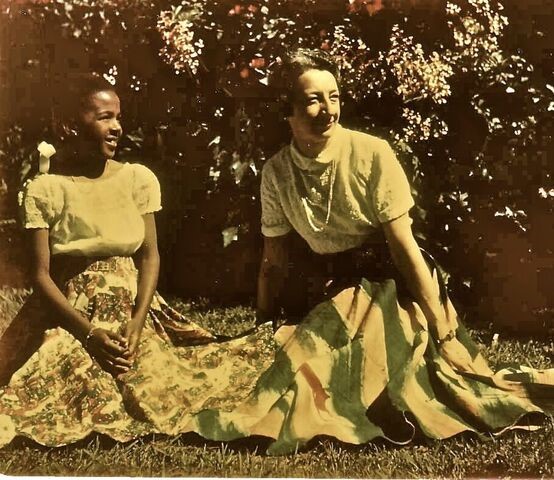
With my German sister, Ruth, 1948
With the intention of becoming an international translator and interpreter, I enrolled in the language academy in Munich, Germany. However, because of my exotic appearance and fluency in High German, I was offered a part in a play—the rest is history, as they say. Based in Munich, I worked as an actress in Germany, Austria, Italy, and France in films, television, and stage, and also traveled the world as a fashion model. Check out my work (in Europe I was Catana Cayetano, in the US Catana Tully).
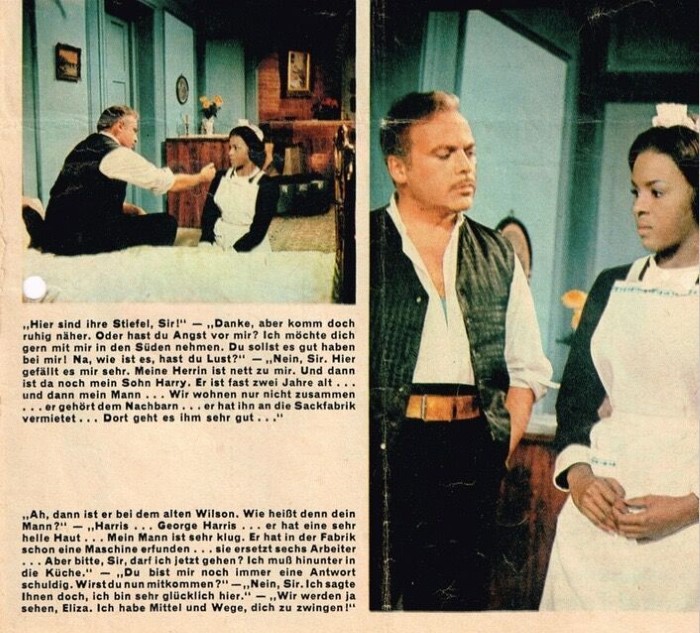
As Eliza in a German production of Uncle Tom’s cabin, in a scene with Herbert Lom
In many a European imagination, I became what can only be called the “darling exotic.” — intriguingly unusual, different, alluring, attractively foreign… Only positive connotations. I was always referred to as the beautiful exotic Catana… I had a nationality that was respected (Guatemalan) and a positive image of self.
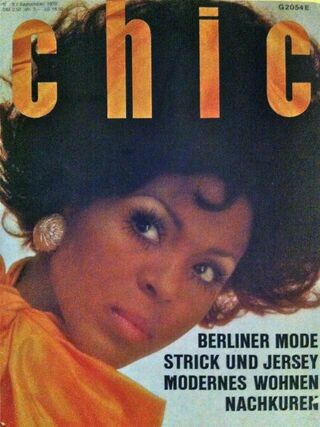
Cover of Chic fashion magazine, 1970
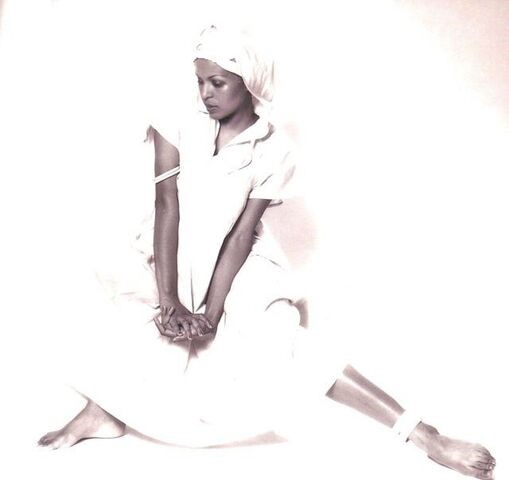
Modeling for photographer Hado Pruetzmann, 1970
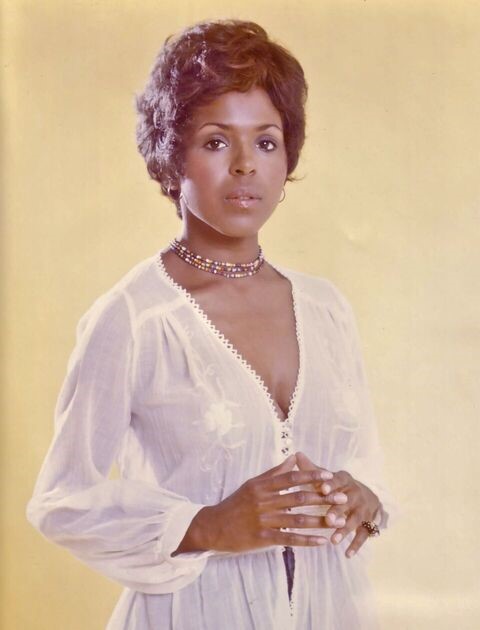
Modeling in the US, 1978
I met and, after five years of courtship, married my American actor husband, Fred Tully. For a White middle-class American in the ‘60s to marry a Black girl was extremely uncommon. (I capitalize the words Black and White because no one is the color black, or the color white. It is to separate race and culture, from the mere color. Even the darkest African isn’t black, nor is the palest European white.) Then we had a son, and because Fred spent months at a time working in the US, I decided to move to Los Angeles for the sake of our family.
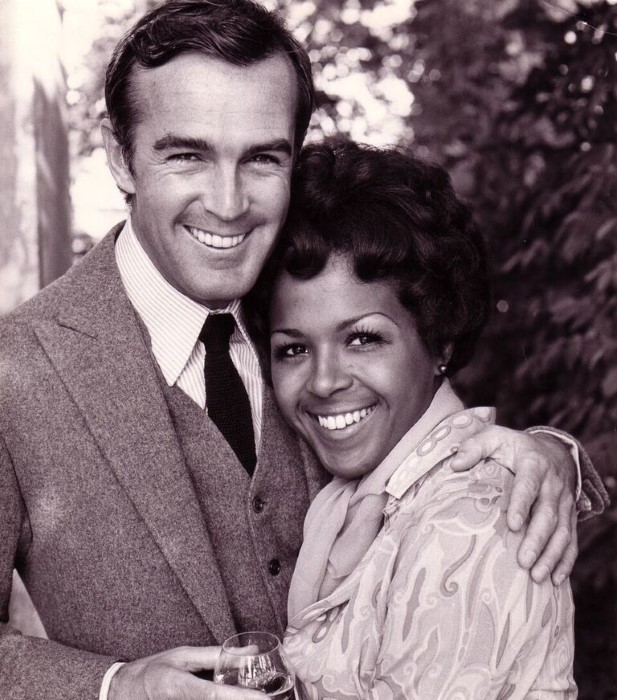
With Fred in Rome, 1969
At 35, with no positive Black frame of reference, subliminal messages had created in my mind a negative vision of Blacks. Having to identify as Black, as was demanded of me in the US, was extremely irritating, particularly when my appearance had elsewhere been to my undisputed advantage.. Looking back, I guess I was. At the time, although I was aware of the attention, I did not capitalize on it. My sense of self became brittle so that in spite of having landed a role in a major US film (Swashbucklers) and a recurring part in an educational TV series, I gave up acting. After three years of grappling with racism and discrimination, I moved the family back to Munich. The confusion led to further resettling: one year in Munich, two in San Miguel de Allende, Mexico, and finally, upstate New York, where my husband’s family lived.

With Patrick, 1978
At 42, and in need of work, it was time to finish my college degree. I was mischievous as a school kid, but studying came easy as a focused adult. I enrolled at the University of New York at Albany and obtained a Master’s Degree in Latin American and Caribbean Literature, followed by a doctorate in Humanistic Studies. With those degrees in hand, I applied for and received a tenure track position at the Northeast Center, Empire State College (ESC), New York. The college is part of the State University of New York system. I was exactly 49 years and 10 months old when I signed on the dotted line. I created a variety of courses in undergraduate and graduate studies in Latin American and Caribbean literatures, cultural studies, art history, and social studies.
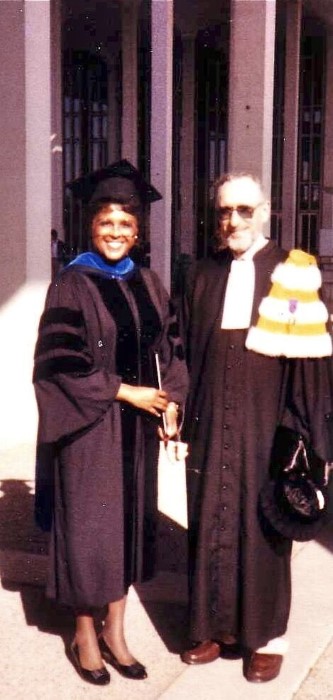
Graduating with my doctorate in Humanistic Studies, 1989
While the position allowed for much academic creativity in designing my courses, my real learning came from mentoring adult students who wanted to complete a degree they had abandoned years ago, many of whom had acquired significant knowledge in an area for which college credit could be awarded. Reinvention was everywhere. With completed degrees, doors opened for these students to significant positive changes in their lives. There are several who, after completing their bachelor’s degree, continued studying and are now faculty in colleges and universities. They all taught me about courage and perseverance in the face of adversity.
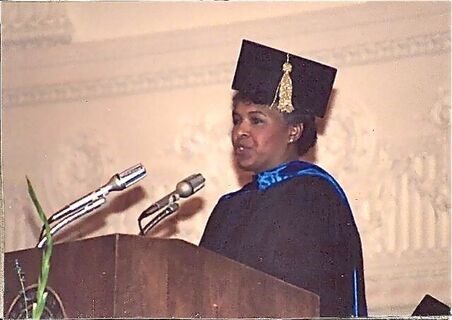
Addressing our graduating class, 1992
ESC was a simulating environment, and I would have stayed longer, had my husband not come down with cancer. When it became clear his time was coming to an end, I retired at 63. Fred wanted to see me among family when his time came so we sold our home and moved to Guatemala, but it was hard for me to adjust to living there again. When our son married and moved to Sedona, Arizona, a haven for alternative medicine practitioners, I again packed our household up and moved back to the US, this time to Arizona.
Fred passed a few months after our arrival, and I returned to ESC as part-time faculty in the international section of the college, teaching art history and cultural studies and mentoring students through their degrees. After traveling to locations such as Beirut to open the semester, I could teach online from the comfort of my home in Arizona. I also became the interim program director for the Dominican Republic and was regularly in Santo Domingo.
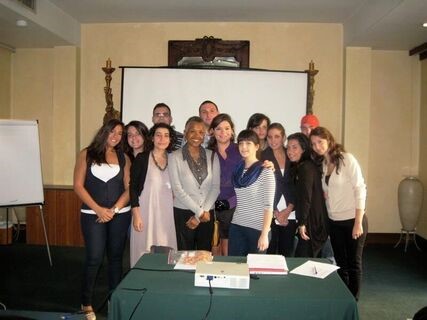
With my students in Lebanon, 2010
What is your next act?
I am the author of Split at the Root: A Memoir of Love and Lost Identity which I published in 2012 at the age of 72. In my memoir, I explore questions of race, adoption, and identity—not in the role of a professor in cultural or social studies, but as the Black child of a German family in Guatemala. I began to research the mystery of why Germans became my parents after my reluctance to being Black in the US became a psychological obstacle. I entered therapy while I was pursuing my Master’s degree. I concluded that it was not only my foreign accent that alienated me from Blacks, and discovered that under the layers of privilege (private schools, international travel, my life as a model and actress), the most important story was that of disinheritance—cultural and racial.

Propelled by that understanding and my therapist’s direction, I began my search. I first found and met my biological father, whom I at first embraced and then rejected (to say more would be a spoiler), and then traveled to Guatemala and the jungle village where I was born to connect with my biological mother’s family. I was floored at how my memory had been kept alive as legend among my siblings and the village. In the end, I discovered the truth, when my German sister, after all my previous efforts, finally came clean. Again, it would be a spoiler to say anything more.
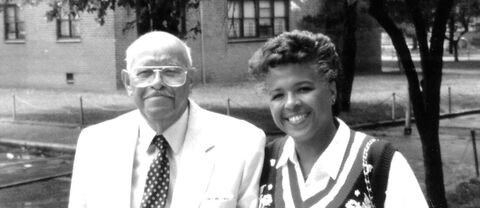
Reuniting with my biological father, 1992
The response has been wonderful. A student at USC picked up a copy of my book and suggested it to one of her teachers. The book became required reading as case study in the Masters in Social Work at USC, Los Angeles. English mayors at Georgian Court University, a liberal college in NJ, were assigned to book as part of their readings about identity and nationality. It has also applied in four high schools that I know of in NY, and CA. Various book clubs in the US added Split at the Root to their reading list and invited me to participate in the discussions.
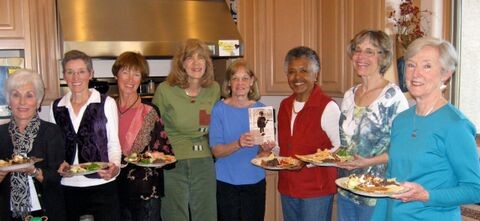
Book club luncheon, Sedona
I’ve been interviewed multiple times on adoption blogs, have a significant amount of positive reviews, including one in the Huffington Post by Myrah Riben. I’ve also had interviews and discussions on some 28 radio shows throughout the US and Canada, and one coming up in England. In late 2015, with the help of two German translator friends, I finished the German translation, titled Gespaltene Seele: Aufzeichnungen über Liebe und verlorene Identität. Once I catch up with my neglected blog, I will start to record the book in both languages.
Initially, the significant response to Split at the Root
